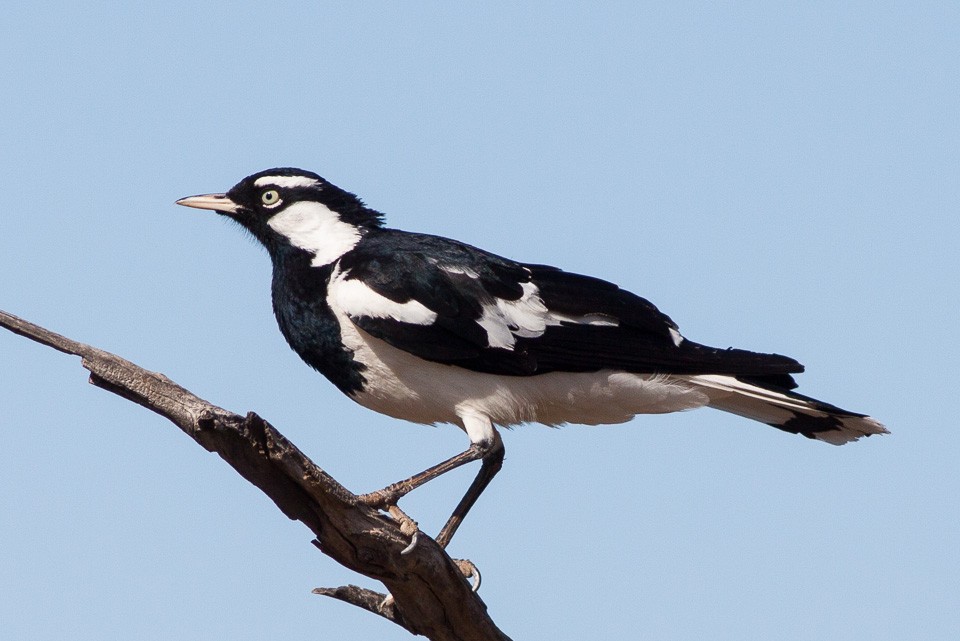Magpie-lark
A species of Magpie-larks, Also known as Mudlark Scientific name : Grallina cyanoleuca Genus : Magpie-larks
Magpie-lark, A species of Magpie-larks
Also known as:
Mudlark
Botanical name: Grallina cyanoleuca
Genus: Magpie-larks
Content
Description People often ask General Info
Description
The magpie-lark is of small to medium size, reaching 25 to 30 cm (9.8 to 11.8 in) long when fully grown, or about the same size as a European common blackbird, and boldly pied in black and white; the weight range is 63.9 to 118 g (2.25 to 4.16 oz) for males, and 70 to 94.5 g (2.47 to 3.33 oz) for females. The sexes are similar from a distance but easy to tell apart: the female has a white throat, the male a black throat and a white "eyebrow". Juveniles and immatures of either sex have the white throat of the female and the black eyestripe of the male, and a white belly. 
Size
25 - 30 cm
Life Expectancy
10 years
Nest Placement
Tree
Feeding Habits
Magpie-lark predominantly consumes insects, larvae, earthworms, and freshwater invertebrates, showcasing a diverse carnivorous diet. Magpie-lark's foraging technique involves ground foraging and aerial sallies. Notably, magpie-lark adapts its diet and foraging behavior to its habitat, demonstrating a flexible feeding strategy.
Habitat
Magpie-lark thrives in a variety of settings including open vegetation, farmland, parks, and gardens. Typically found in broad geographic regions that feature access to surface water, magpie-lark frequents areas near rivers, lakes, and savannas. Although adaptable to human-altered landscapes, the species is less common in arid zones. Habitually, it occupies lowland territories up to elevations of 1000 meters and sporadically reaches altitudes up to 1200 meters.
Dite type
Omnivorous
People often ask
General Info
Feeding Habits
Bird food type
Bird Feeder Type

Ground
Behavior
Group gatherings of magpie-larks have been observed, with loose "flocks" comprising dozens of individuals being observed perched on vantage points. Such behaviour is common, particularly in productive agricultural areas. This behaviour may be pairing or breeding related or simply indicate a bountiful feeding area. 
Distribution Area
It is also found in southern New Guinea and on the island of Timor. In 1924 it was introduced onto Lord Howe Island which lies 600 km (370 mi) to the east of Australia in the Tasman Sea. It is now widespread on the island. The magpie-lark is a familiar sight around Australia; sitting on telephone wires either singly or in pairs, or patrolling patches of bare ground, especially foreshores or swamps. 
Scientific Classification
Phylum
Chordates Class
Birds Order
Perching birds Family
Monarchs Genus
Magpie-larks Species
Magpie-lark 